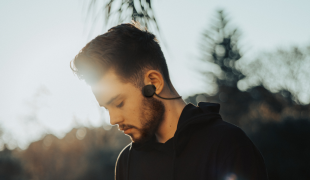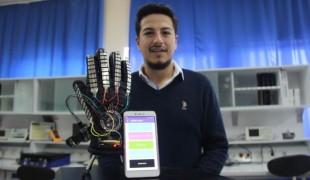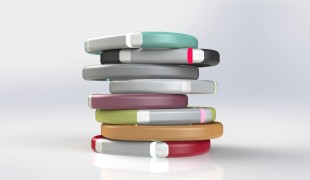- 4579
- 402
- 14
- 13
- 0
- Help Ukraine
About the solution
John Williams, professor and engineer at Colorado State University, has spent much of his career designing electric propulsion systems for space travel and ended up being exposed to a lot of noise that damaged his cochlea, affecting its ability to listen to high frequencies. This diagnosis led Williams to become interested in cochlear implants and sensory substitution.
Therefore, with the collaboration of a Mechanical Engineering student at the university, J.J. Moritz, he created a device that allows people with hearing impairments to be able to "hear" through the tongue.
A microphone connected to a Bluetooth headset detects sound from your surroundings. These sounds are transmitted to a receiver that will convert them into distinct patterns that represent a word and, through electrical impulses, are sent to a retainer installed in the roof of the mouth. The user presses their tongue on this retainer to feel the distinct pattern. With training, the brain is able to "hear" or interpret these patterns and perceive what is being said around it.
Due to some difficulties with positioning the device, neuroscientist Stone-Roy joined the team. With her help, the team is being able to determine which parts of the tongue detect electrical impulses and whether they vary from person to person.
Story adapted from https://source.colostate.edu/words-mouth-csu-device-lets-hear-tongue/
https://www.youtube.com/watch?v=RBV8WTiDyII
这些解决方案不应包括使用药物,化学品或生物制品(包括食品);创伤性设备;冒犯性的,商业或内在危险的内容。该解决方案未经医学验证。请谨慎进行!如果您有任何疑问,请咨询健康专家。
-
-
575
-
0
-
10886

Pedro, an acoustic engineer designed an open-ear hearable device in order to allow everyone to listen to music!
COMMUNICATION: Communicating, whether by speaking, listening, or other means
Hearing Disorders
5 Senses support devices: (glasses, hearing aids, headphones...)
Assistive Technology access
Body-Worn solutions (Clothing, accessories, shoes, sensors...)
Regaining sensory function
Promoting self-management
Promoting inclusivity and social integration
Improving Speech and Communication
Raise awareness
General and Family Medicine
Internal Medicine
Neurology
Otorhinolaryngology
Denmark
-
-
-
412
-
2
-
4797

Student invents glove that translates sign language into text
COMMUNICATION: Communicating, whether by speaking, listening, or other means
Social interaction
Blindness
Visual Impairment
Hearing Disorders
Congenital Deafness
Speech Disorder
App (Including when connected with wearable)
Body-Worn solutions (Clothing, accessories, shoes, sensors...)
5 Senses support devices: (glasses, hearing aids, headphones...)
Vision problems
Difficulty speaking or understanding speech
Hearing loss or ringing in the ears (tinnitus)
Regaining sensory function
Promoting inclusivity and social integration
Improving Speech and Communication
Neurology
Ophthalmology
Otorhinolaryngology
Turkey
-
-
-
669
-
1
-
12582

Man invents wristband to help deaf people be more aware of their surroundings
COMMUNICATION: Communicating, whether by speaking, listening, or other means
Social interaction
Congenital Deafness
Assistive Daily Life Device (to help ADL)
5 Senses support devices: (glasses, hearing aids, headphones...)
AI algorithm
Difficulty speaking or understanding speech
Cognitive impairment
Confusion
Sensory disturbances (e.g., hypersensitivity to touch, temperature changes)
Regaining sensory function
Promoting inclusivity and social integration
Improving Speech and Communication
Otorhinolaryngology
South Africa
-
 zh
zh